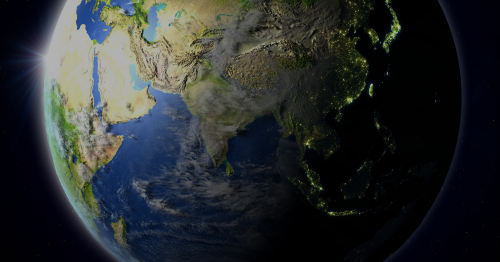The US, UK and other countries work to find a new home for scrap plastics and waste
For many developed nations, the last step of recycling depends heavily on a cluster of Asian countries. However, new waste import bans in China and India have upended the status quo, leaving the US, UK, and other economic superpowers working to find a new solution.
China was the first country to reverse course. After operating as the world’s largest waste destination for more than 30 years, the Ministry of Environmental Protection of the People’s Republic of China filed notice of its waste import ban with the World Trade Organization. Effective in January 2018, the country stopped importing 24 kinds of solid waste, including plastics, unsorted waste paper, and waste textile materials. Then, in March of this year, China went one step further, announcing that it would cut waste imports to zero by 2020. In just the first quarter after the initial ban, waste imports fell by 54% compared to the year prior.
India is following China’s lead, with a comprehensive scrap plastic imports ban that went into effect August 31. The ban covers most plastics, including mixed plastics and polyethylene terephthalate (PET). Year to date, India is the second largest US scrap plastics importer in the world, taking in an estimated 156 million pounds of waste in addition to another 21.3 million pounds of “other” plastics, which include e-plastics. India’s plastic waste import ban is indicative of a growing trend in Southeast Asia, and it’s also part of a major domestic clean-up effort. The country will ban use of plastic bags, cups, and straws on October 2, as part of a gradual crackdown on all single-use plastics.
Though these waste import bans will have positive environmental impacts, they create a host of problems domestically and abroad. In China, many manufacturers will lose access to valuable scrap materials. As a result, local factories could turn to virgin materials that could have greater energy requirements and increase greenhouse gas emissions.
The bans also mean an increase in waste imports to other nations, which are smaller and less equipped to handle the amount of waste processed in China and India. For example, in the months immediately following China’s ban, UK plastic waste imports to Malaysia tripled while Vietnam saw a 50% increase and Thailand's imports exploded 50-fold. All three countries have since instituted various plastic import waste bans.
For the moment, quick problem solving has led waste exporters to lean more heavily on other countries. But there’s a possibility that once these nations become overwhelmed, the waste import bans will continue to spread, leaving major developed nations in need of a more permanent, homegrown solution.
As sure as the mountain of e-waste continues to grow, rest assured that the recycling landscape will become more unforgiving. Expect more shock waves within the Asia-Pacific region as national authorities struggle with the massive amount of material that China and India are no longer willing to accept. It is more important than ever to engage the right kind of partner that can help you compliantly navigate these turbulent waters.





